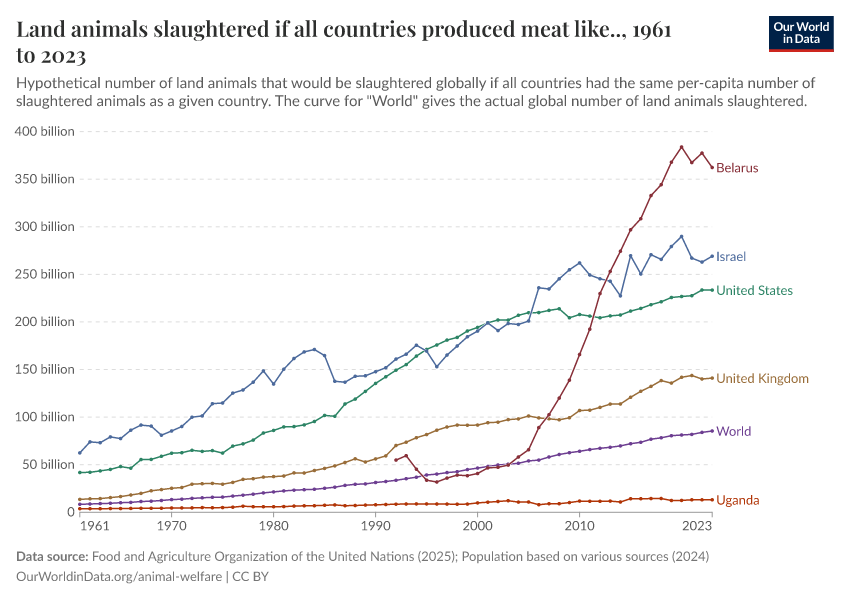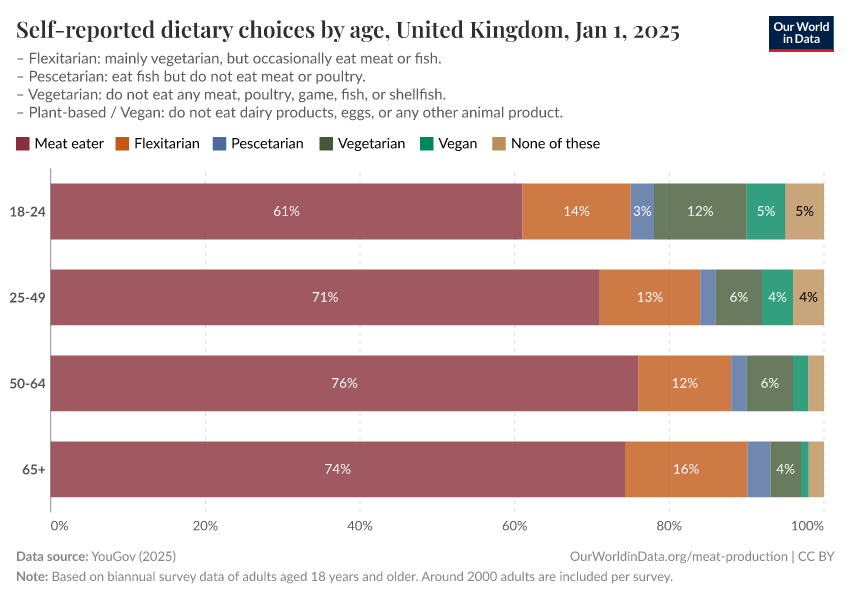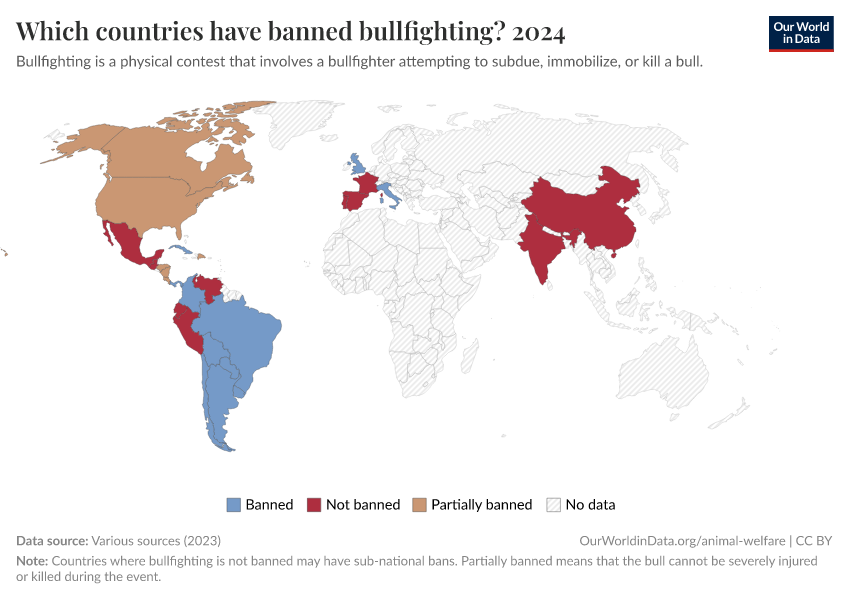Animal Welfare
On Our World in Data, we cover many topics related to reducing human suffering: alleviating poverty, reducing child and maternal mortality, curing diseases, and ending hunger.
But if we aim to reduce total suffering, society’s ability to reduce this in other animals – which feel pain, too – also matters.
This is especially true when we look at the numbers: every year, humans slaughter more than 80 billion land-based animals for farming alone. Most of these animals are raised in factory farms, often in painful and inhumane conditions.
Estimates for fish are more uncertain, but when we include them, these numbers more than double.1
These numbers are large – but this also means that there are large opportunities to alleviate animal suffering by reducing the number of animals we use for food, science, cosmetics, and other industries and improving the living conditions of those we continue to raise.
On this page, you can find all of our data, visualizations, and writing on animal welfare.
Research & Writing
September 26, 2023
How many animals get slaughtered every day?
Hundreds of millions of animals get killed for meat every day.
September 25, 2023
How many animals are factory-farmed?
The majority of farm animals in the world are factory-farmed.
September 25, 2023
Do better cages or cage-free environments really improve the lives of hens?
Research suggests that moving hens from battery cages to cage-free environments reduces the time animals spend in pain substantially.
Key Charts on Animal Welfare
See all charts on this topicEndnotes
Unfortunately, the UN FAO only publishes data on wild fish catch and aquaculture production in terms of tonnes, and not as a count of the number of individual animals.
Other organizations attempt to estimate the number of individual animals, at least the number of farmed fish. The published estimates for the number of farmed fish come with very large uncertainties, but give some indication of the scale:
- For farmed fish in 2019, the Sentience Institute gives a midpoint estimate of 77 billion. The range around this midpoint is large, from 29 to 149 billion animals annually.
- The study by Mood, Lara, Boyland, and Brooke (2023) estimates the total number of farmed finfish to be 124 billion. See Mood, A., Lara, E., Boyland, N., & Brooke, P. (2023). Estimating global numbers of farmed fishes killed for food annually from 1990 to 2019. Animal Welfare, 32, E12. https://doi.org/10.1017/awf.2023.4
Only considering farmed fish and relying on the midpoint estimate published by the Sentience Institute, the number of killed fish each year is 77 billion. This would mean the number of killed farmed fish is similar to the number of killed chickens. However, if the estimate by Mood et al. is correct, then the daily death count is almost twice as high.
These estimates refer to the number of farmed fish only; they do not include wild aquatic animals that are caught and killed for human consumption.
Cite this work
Our articles and data visualizations rely on work from many different people and organizations. When citing this topic page, please also cite the underlying data sources. This topic page can be cited as:
Hannah Ritchie, Pablo Rosado, and Max Roser (2023) - “Animal Welfare” Published online at OurWorldinData.org. Retrieved from: 'https://ourworldindata.org/animal-welfare' [Online Resource]BibTeX citation
@article{owid-animal-welfare,
author = {Hannah Ritchie and Pablo Rosado and Max Roser},
title = {Animal Welfare},
journal = {Our World in Data},
year = {2023},
note = {https://ourworldindata.org/animal-welfare}
}Reuse this work freely
All visualizations, data, and code produced by Our World in Data are completely open access under the Creative Commons BY license. You have the permission to use, distribute, and reproduce these in any medium, provided the source and authors are credited.
The data produced by third parties and made available by Our World in Data is subject to the license terms from the original third-party authors. We will always indicate the original source of the data in our documentation, so you should always check the license of any such third-party data before use and redistribution.
All of our charts can be embedded in any site.























